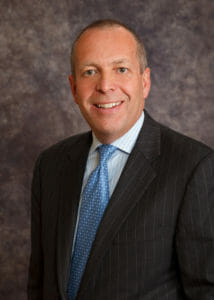Lack of capital is preventing many skilled nursing operators from adding ancillary services, but that doesn’t have to be the case, according to an executive with nearly 25 years’ experience in supportive specialties.

Capital-light service lines that can grow organically over time offer a way to expand reach and spread risk in a challenging environment, said Peter Longo, managing partner of Cantex Continuing Care Network.
“Why aren’t more people engaging or taking on ancillary businesses for all the obvious reasons, in terms of natural extension of your core business, the diversification of risk that it provides?” he asked in a conversation with McKnight’s Long-Term Care News last week. “It really does help during times when one of your business lines is stressed to have others that have a different risk profile or a different cycle. That maybe will help offset during a rough time for your SNF.”
Texas-based Cantex operates 39 skilled nursing facilities, one assisted living facility, 14 home health or hospice agencies, three pharmacies and a special needs health plan, and it grew or added several of the ancillary lines during the pandemic. Growth and quick recovery of referrals in the home health and hospice lines — now both operating above-pre pandemic levels — helped sustain the larger company, which is targeting a full SNF occupancy rebound by late 2022 and still seeing core operating costs at about 12% above normal.
The company has long taken a growth position, though one with a built-in regulator.
“We consider it essential to be always growing, but at a speed limit that only allows for growth at a high quality level. We don’t consider it a good year unless we’ve started something new and found new ways to expand our universe,” Longo said. “We’re lifting our heads, and we’re saying, ‘OK. We’re energized going forward.’ We now know recovery is achievable and we’re on our way to getting there, but now we’re thinking about what comes next beyond where we left off pre-COVID.”
While Cantex acquired three skilled nursing facilities and one assisted living facility since the pandemic’s start, the company has a deep and varied ancillary services bench.

“A lot of the reason why a lot of providers are not more actively engaging with these ancillary businesses is really two things: One, if you’re going to do it, and you’re going to do it well, it takes a very significant management bandwidth,” Longo said. “Also, capital can be an obstacle, particularly because so many providers in our landscape today don’t own their own buildings and so the capital is of course provided by an outside party, usually a REIT, and those providers don’t have the capital to be able to commit to the starting of these new businesses.
“If capital is the obstacle, then consider some of the more capital-light ancillaries that are more just natural extensions of your existing business that can be grown incrementally over time without too much capital,” he added.
While creating an Institution Special Needs Plan, or I-SNP, is the most expensive because of insurance licensing and deposit obligations, Longo recommended providers consider home health or hospice because they have lighter upfront costs, with investment likely growing over time along with revenue opportunities.
‘Changing the game’ for clinical care
Such lines don’t just bring in standalone income. Longo has seen them prop up his core business, serving some 3,000 SNF patients. The mission has been to envelop and enhance services at the facilities themselves.
The ability to care for patients more seamlessly excites referral partners. So do better outcomes facilitated across the continuum and during transitions of care, Longo noted.
But it takes a focused management and cross-building approach to ensure continuity. Providers shouldn’t get into ancillaries if they’re going through major leadership turnover or putting out other fires, Longo added.
“You have to be committed to the notion that you’re going to make sure you’re not going to allow those businesses to be siloed,” he said. “One of the ways that you do that is that clinicians who are working on each of those segments need to be meeting and planning and working on best practices together so there really is continuity of care.”
It’s about technology and other new business lines, like ISNPs, doing what we hoped they would, which was to change the game on the robustness of our clinical services.
Peter Longo
From a clinical perspective, additional staff and resources are leading to improved patient outcomes for Cantex. On the home health side, most of the company’s patients have access to tablets that are used to monitor vitals and improve communication between in-person care. That same sort of “hovering over,” as Longo calls it, was also added to the company’s SNFs through the addition of the I-SNP, which places nurse practitioners in buildings to add more advanced clinical care every day.
Rehospitalization rates are dramatically lower for the home health cohort being monitored by telehealth, and those rates are down to a level he’s “never seen before” on the skilled side.
“That in turn, captures the attention of hospitals, physicians and other referral sources,” he said. “It’s really proving to be a game-changer. That’s very hopeful. It’s about technology and other new business lines, like ISNPs, doing what we hoped they would, which was to change the game on the robustness of our clinical services, the attention that we attract from our referral sources in terms of what we can do to advance their own game.”
A gateway to the future
Cantex has doggedly pursued its ancillary service line, a strategy that started in the late 1990s with in-house pharmacy and continued in early 2020 with the initial I-SNP launch. In part, the I-SNP was a way to get into the managed care game, after Longo saw the writing on the proverbial wall.
“When you rank challenges the industry faces, after the labor crisis, the No. 2 challenge is how to live in an increasingly managed care world,” he said.
Texas has had no Medicaid increases in seven years, though talks are looking up for a rate hike during the 2023 session. But the long dry spell, combined with historically low occupancy averages statewide, mean those who play in the SNF world in Texas must carefully manage costs.
Increasingly, that has meant getting ahead of Medicaid managed care as well as Medicare Advantage penetration, which now exceeds 50% in the state and pays an average 20% less per day than traditional Medicare.
This is the path forward
Peter Longo
Unlike those relatively low capital home and hospice ancillaries, Cantex leaders predicted that operating an I-SNP would be a costly proposition up front. Still, they expected it would give them a way to better both improve care and control revenue related to some patients.
Launching in early COVID proved them more right than they could have known.
“It wasn’t the most successful time for the I-SNP, but it was 100% worth it,” Longo said, noting the plan has since approached the break-even mark. “What we discovered in the process, beyond providing services to our long-stay residents who are members of the plan, those nurse practitioners are really there to provide support to other components of the business. Anything that’s happening in the building that requires a higher-level practitioner, they’re able to do that, and we encourage them to do that. And now, they’re able to bill (for) primary care services.”
He said Cantex also noticed pretty quickly that the added services being offered by nurse practitioners helped support directors of nursing and other clinical leaders during the pandemic and drew the notice of referral partners to help prop up census.
“This is the path forward to a great opportunity for our entire sector: This is the gateway to becoming a primary care practice or a medical home,” Longo said. “Can we envision a day when all those services are provided by our own practitioners? Could we provide health and wellness services for our employees? … Can we find ways to deliver those same services not only through the routine ways that we provide care historically in skilled nursing facilities but also through physicians, and nurse practitioners and physician assistants in our primary care service that will grow over time?”
He sees the I-SNP as the bridge to a changing, population-health driven skilled nursing operation of the future.
“We see (clinic) practices like Oak Street and ChenMed who are doing very admirable service in terms of extending medical home and primary care out into the community, and I think that skilled nursing providers who have chosen to extend their reach into the ISNP world, there’s a way to follow a similar path, to really become the locus and center of care for the elderly and the chronic-care patients in a community within our own house,” he said.




